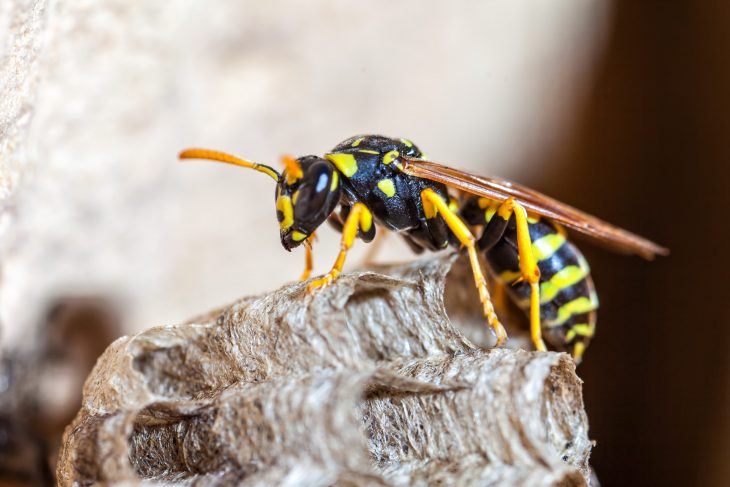
People often think wasps sting for no reason, but this isn’t the case. There will always be an underlying cause as to why these insects attack, mostly because they’re trying to protect themselves. With that, you should know that wasps are more than just pests and aggressive stingers! If you want to learn more about the different types of wasps, their distinct characteristics, behavior, and more, then keep on reading!
What is a wasp?
Before listing down the different types of wasps, it’s important to first define what a wasp is. A wasp is a narrow-waisted insect from the order Hymenoptera and the suborder Apocrita suborder.
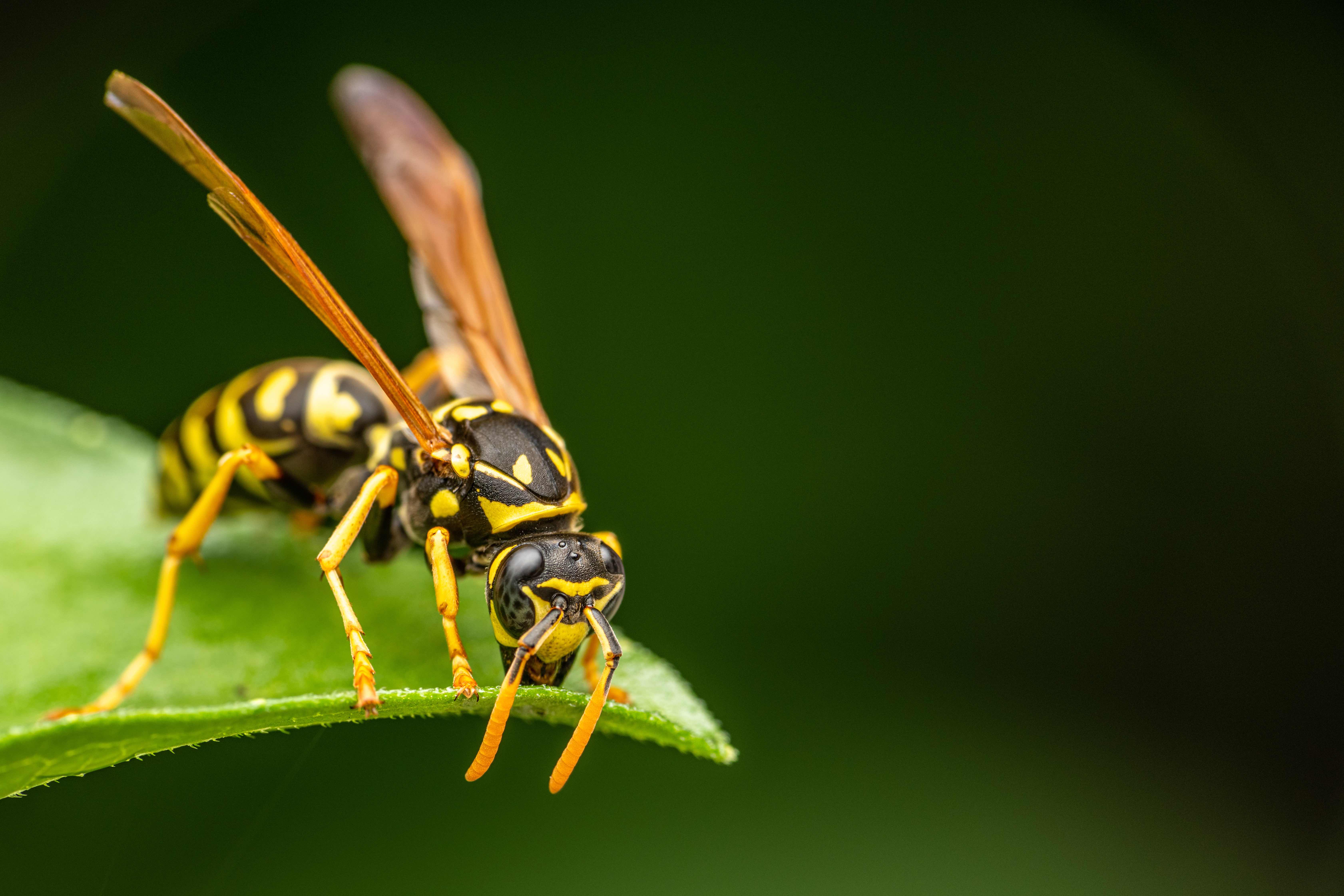
Wasps play an important role in the ecosystem. As predators, wasps feed on lots of insect pests, such as flies, aphids, and grubs. Wasps can be your best friend when it comes to keeping pests out of your garden. However, wasps also eat caterpillars, which affects the process of butterflies pollinating your flowers. Wasps are also attracted to meat and sweet food. This can certainly make picnics and outdoor dining a hassle for some.
If the wasps in your backyard are becoming a problem, you might need to call pest control. Before calling them, however, it’s important to be sure that they actually are wasps. Many people, including experts, often confuse wasps for bees and vice versa.
Bees vs Wasps: What’s the difference?
Contrary to popular belief, wasps are not bees, and bees are not wasps either. However, they are alike in many ways. For one, they are both insects belonging to the same suborder. They have similar shapes, and they both have stingers.
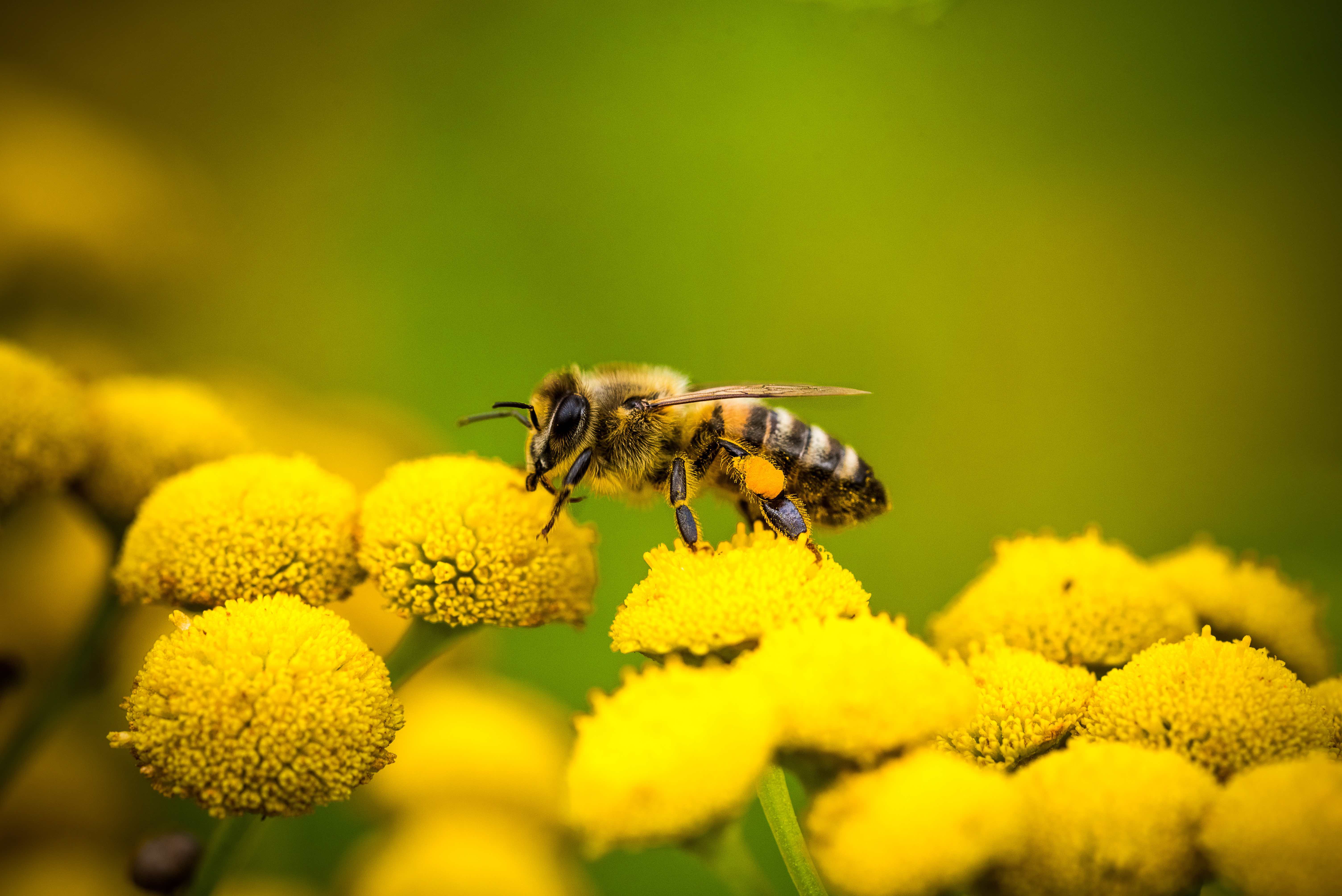
While bees have brownish-yellow stripes, wasps have distinct yellow and black stripes. Bees are also “hairy”, while wasps appear bald and shiny. Wasps also appear slimmer than bees because of their “wasp waist”.
While both insects can sting you, bees can only sting once. When this happens, bees leave their stingers behind in your skin. On the other hand, wasps can sting you several times.
Are wasps dangerous?
Seeing as how they can sting you several times in a row, it’s clear wasps can be dangerous. But just how dangerous can wasps be?
A single wasp sting that is treated right away is hardly a cause for concern. In most cases, administering first aid is enough to treat a wasp sting. Cleaning the area, using an ice pack in case of swelling, and drinking pain relievers should be sufficient.
However, some people can be allergic to wasp venom. Allergic reactions can range from mild to severe. The worst-case scenario is anaphylaxis, which is life-threatening. Some symptoms of anaphylaxis include burning skin, swollen mouth, chest pains or tightness, and difficulty breathing. When this happens, it’s important to seek medical care immediately.
Some types of wasps also release pheromones that alert other wasps to attack. When a wasp stings you, it is probably a good idea to leave the area right away. That way, you can treat your sting right away and attend to your wound faster.
How many types of wasps are there?
There are thousands of different types of wasps, but you can group them into two major categories: solitary wasps and social wasps.
Like humans, some types of wasps prefer to be alone. They are called solitary wasps. Solitary wasps are usually parasitic, and they do not build colonies. Instead, they prey on other insects by themselves.
Wasps from the Chrysididae, Tiphiidae, Scoliidae, and Mutillidae families belong to this group.
Social wasps, on the other hand, refer to types of wasps that live in colonies. These colonies aren’t as big as ant colonies because most wasp nests can only hold around a dozen wasps. The larger wasp nets, however, can hold up to 10,000 wasps.
Wasps from the Vespidae family fall under this category.
Bald-Faced Hornet

Scientific name: Dolichovespula maculata
Despite what its common name suggests, the bald-faced hornet isn’t actually a hornet. It is a type of wasp found in southeastern United States and southern Canada.
The bald-faced hornet has a black body with a white head. It also has three white stripes at the end of its body. Most bald-faced hornets are around 0.75 inches long, making them larger than other species in their genus.
Bald-faced hornets are social wasps, and their colonies usually comprise 400 to 700 wasps. Like other types of wasps, bald-faced hornets are aggressive defenders of their nest. They will repeatedly sting any humans that get too close to their nest. Aside from stinging them repeatedly, bald-faced hornets can also eject venom from their stingers into the eyes of intruders. This venom can cause temporary blindness, making it difficult for intruders to come closer to the nest.
Other names for the bald-faced hornet include “bald-faced wasp”, “white-faced hornet”, “bull wasp”, and “blackjacket”.
Blue-Winged Wasp
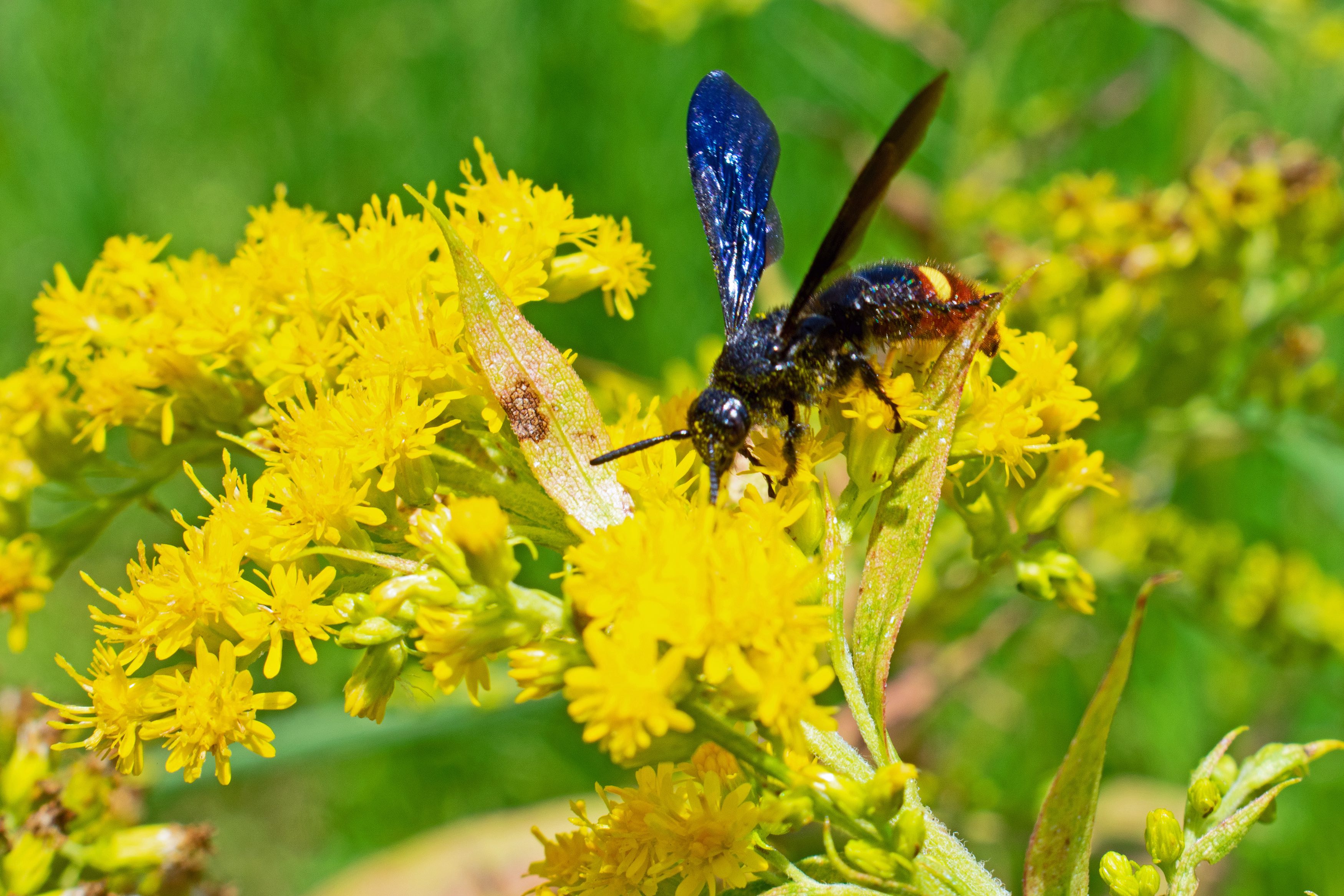
Scientific name: Scolia dubia
The blue-winged wasp, or the blue-winged scoliid wasp, is a wasp that populates New England, Florida, and North America, namely the Rocky Mountains.
Blue-winged wasps have a black body and head, with two yellow spots on their abdomen. As their name suggests, they have dark blue wings. Compared to other types of wasps, the blue-winged wasp is longer. The blue-winged wasp is 0.8 to 1.0 inches long.
Blue-winged wasps enjoy eating nectar, so you’ll often see them flying around flowers. They also eat beetles and grubs. Sometimes, a blue-winged wasp will sting and burrow deep into a grub. As a parasitic wasp, it constructs its cell inside the grub and lays an egg inside the host. Eventually, the larva or baby wasp consumes the host.
Braconid Wasps
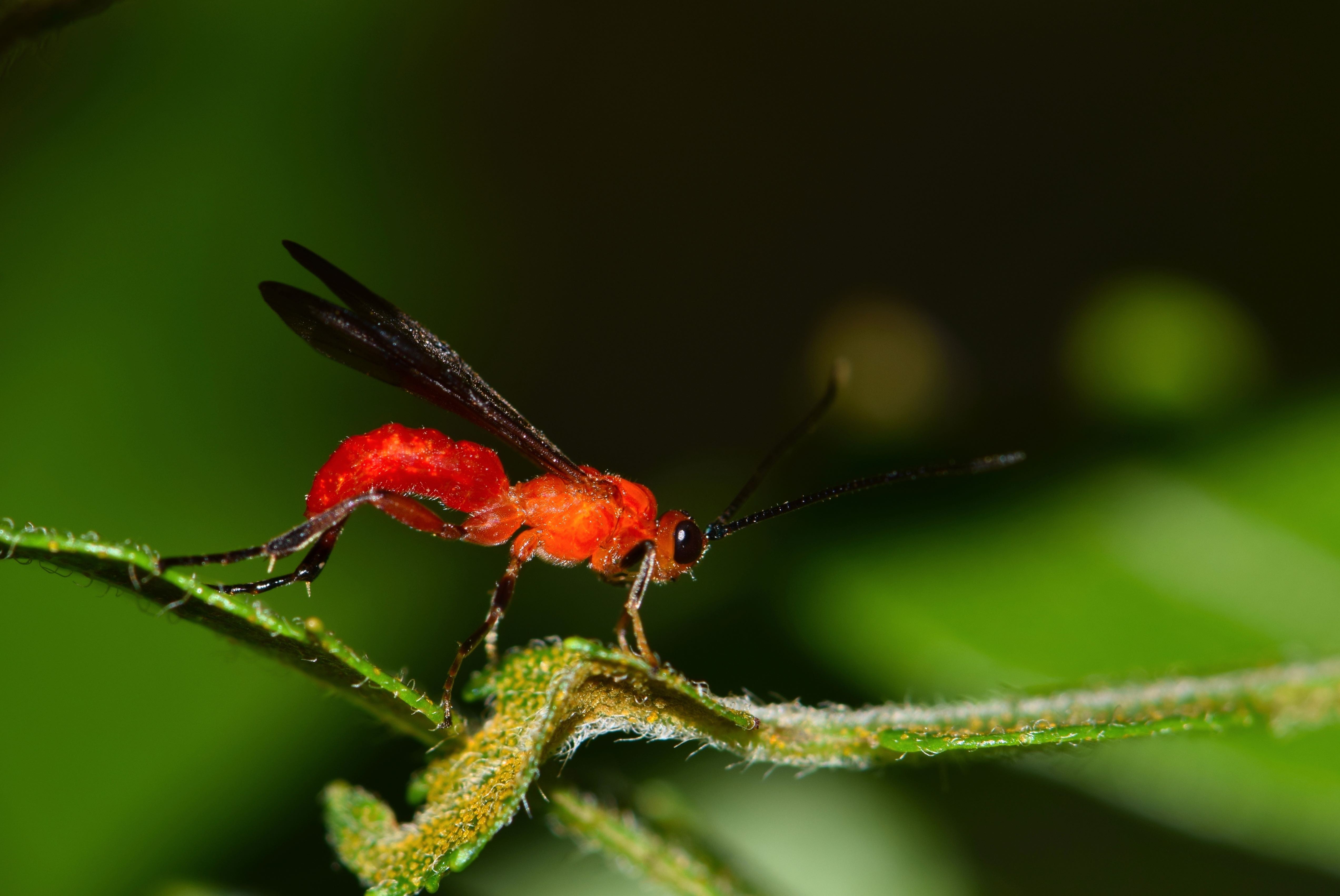
Scientific name: Braconidae
Braconid wasps refer to types of wasps under the Braconidae family. There are 47 subfamilies, amounting to around 17,000 recognized wasp species. Some of them live in East Asia, Africa, and North America.
Braconid wasps have small, red bodies with black antennae, heads, and wings. They have narrow waists, and they look like ants. Instead of a stinger, Braconid wasps have long ovipositors. These are needle-like organs they use to deposit eggs into safe areas.
Like the blue-winged wasp, Braconid wasps are also parasitic. Some of their hosts are moths, butterflies, and fruit flies. They will not only lessen the nasty pests in your backyard, but they also don’t sting humans! This makes them less dangerous to humans.
Cicada Killer Wasp
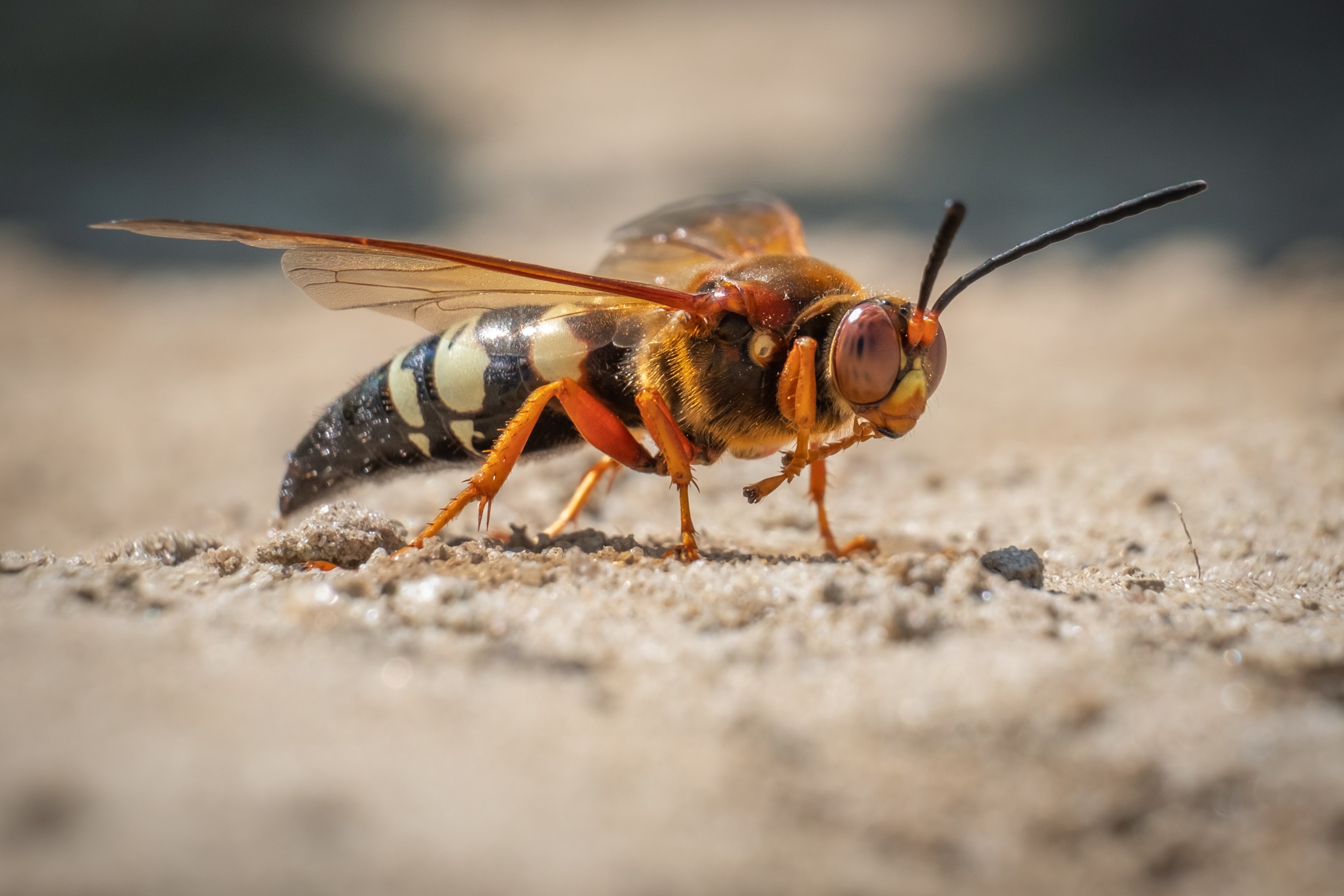
Scientific name: Sphecius speciosus
The Cicada Killer Wasp, or simply “Cicada Killer”, is a wasp species common in the eastern and midwestern regions of the United States. As their name suggests, the Cicada Killer Wasp preys on cicadas. Most Cicada Killers are 0.6 to 2.0 inches long. Their sizes vary, but female Cicada Killers are usually bigger than male wasps. Cicada Killers have reddish-brown to black bodies with brown wings.
Cicada Killer Wasps are solitary wasps, but they sometimes burrow in the same areas. Because of this, many consider them to be pests. Either way, they play an important role in controlling the population of cicadas.
Cicada killers are the largest wasps in California. They are also abundant in Washington, D.C. during July.
Common Wasp
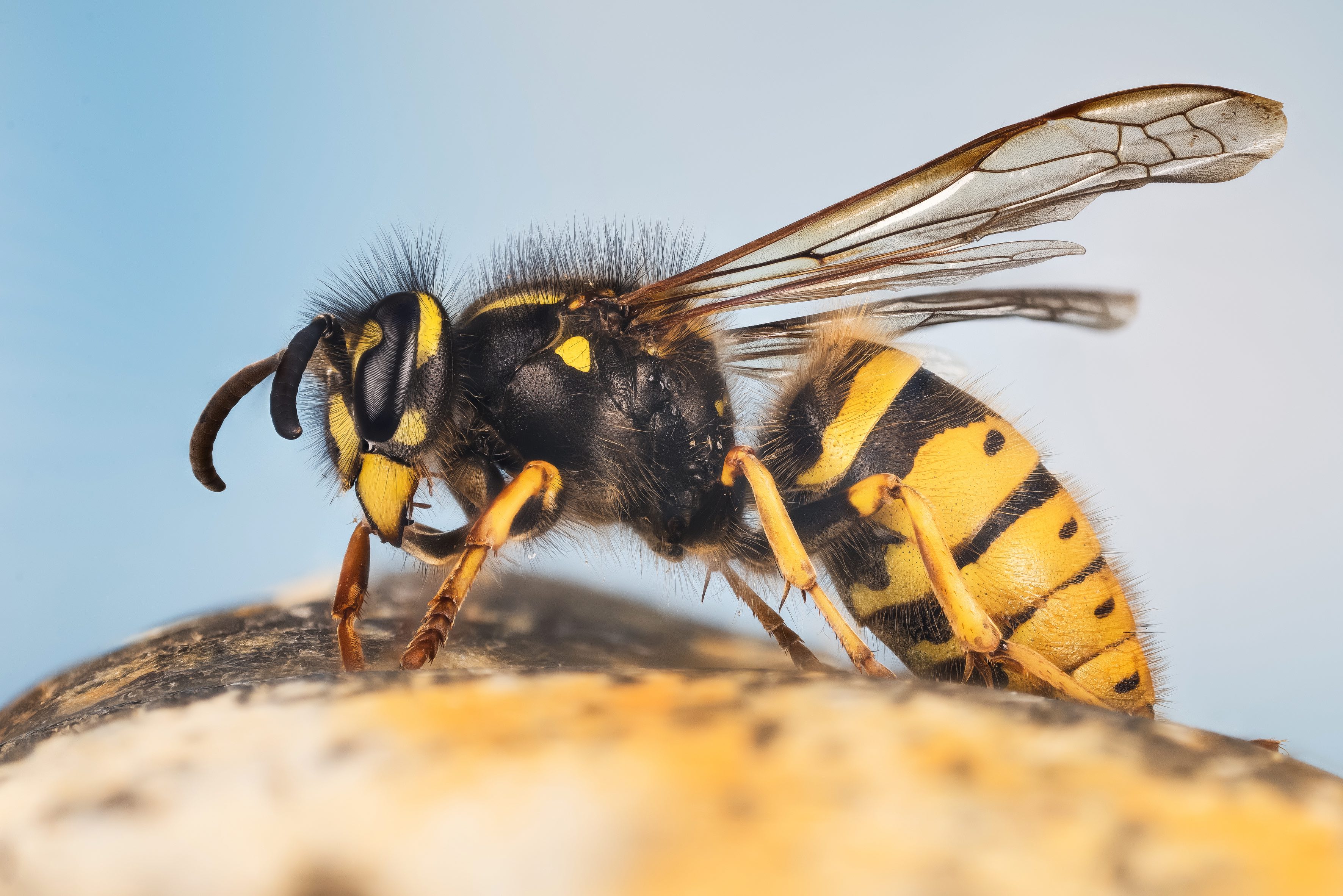
Scientific name: Vespula vulgaris
People often confuse the common wasp with European wasps. This is not a surprise as people also call common wasps “European wasps” in certain regions. However, these are two completely different types of wasps.
The common wasp is a wasp species found in the United Kingdom, Germany, New Zealand, and Australia. They also populate regions in India and China.
Common wasps have a black body with yellow stripes. They also have a “waist” between their thorax and abdomen, making them look slim. On average, common wasps are around 0.5 to 0.7 inches long. One distinct feature of common wasps is the black anchor-shaped mark on their face.
Common wasps make their nests using chewed wood fibers. To protect their nest from pests like ants, wasps produce a repellant chemical.
Cow Killer Wasp
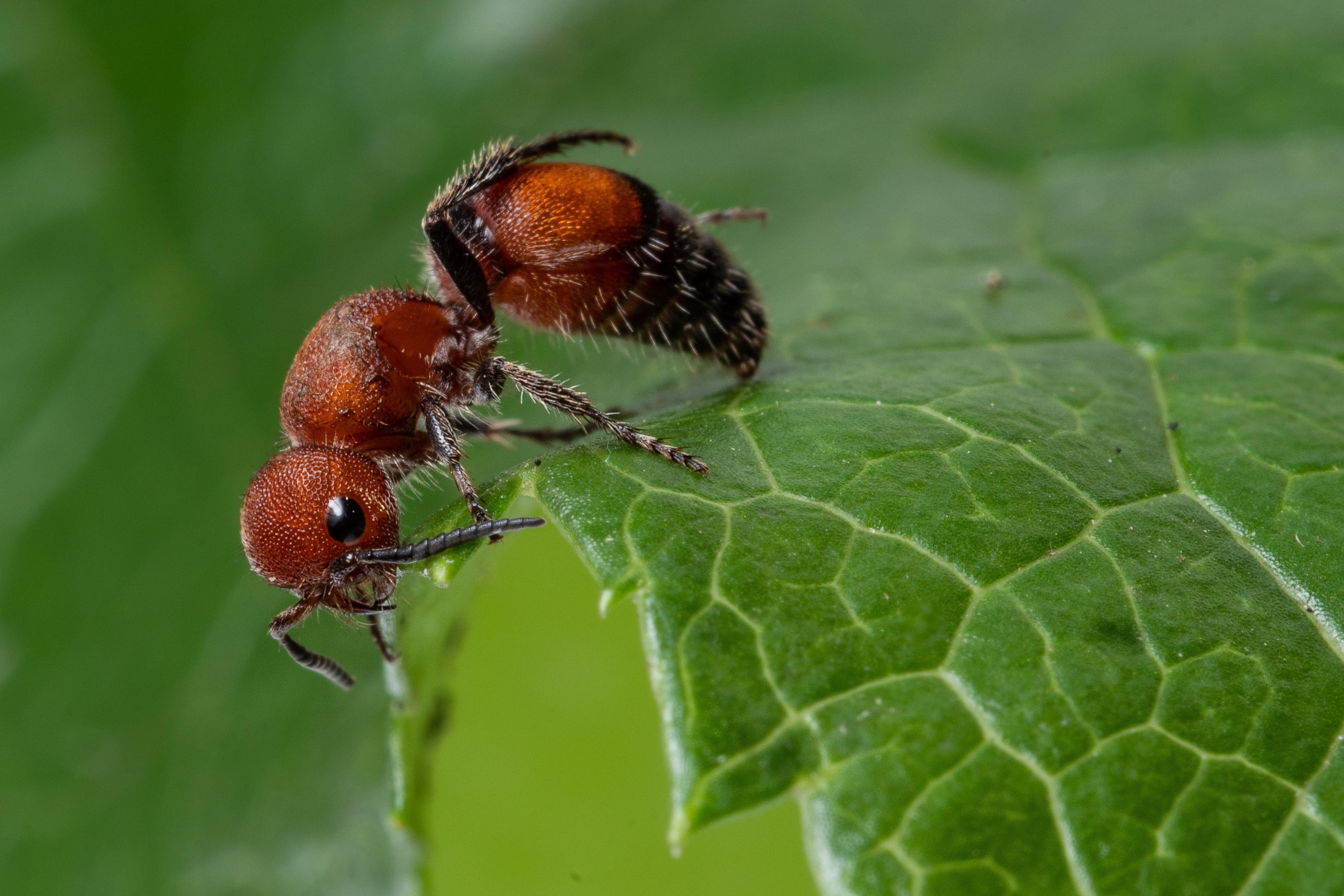
Scientific name: Dasymutilla occidentalis
The Cow Killer Wasp is a wasp species native to the eastern United States. Today, it lives in various regions of the United States, such as Kansas, Florida, and Texas.
Cow Killer Wasps are mostly black with bright red to orange marks. They are around 0.75 inches long. At first glance, some may mistake this wasp as an ant because the female Cow Killer Wasp has no wings. This is why other names for the cow killer wasp are “red velvet ant”, “eastern velvet ant”, and “cow ant”.
Compared to other types of wasps, the Cow Killer Wasp has a very painful sting. In fact, scientists rank its sting a 3 out of 4, with 4 as the most painful, on a sting pain index. While the sting is painful, the venom they release is not toxic. They are not aggressive, so as long as you leave them alone, Cow Killer Wasps won’t bother you.
Cuckoo Wasps
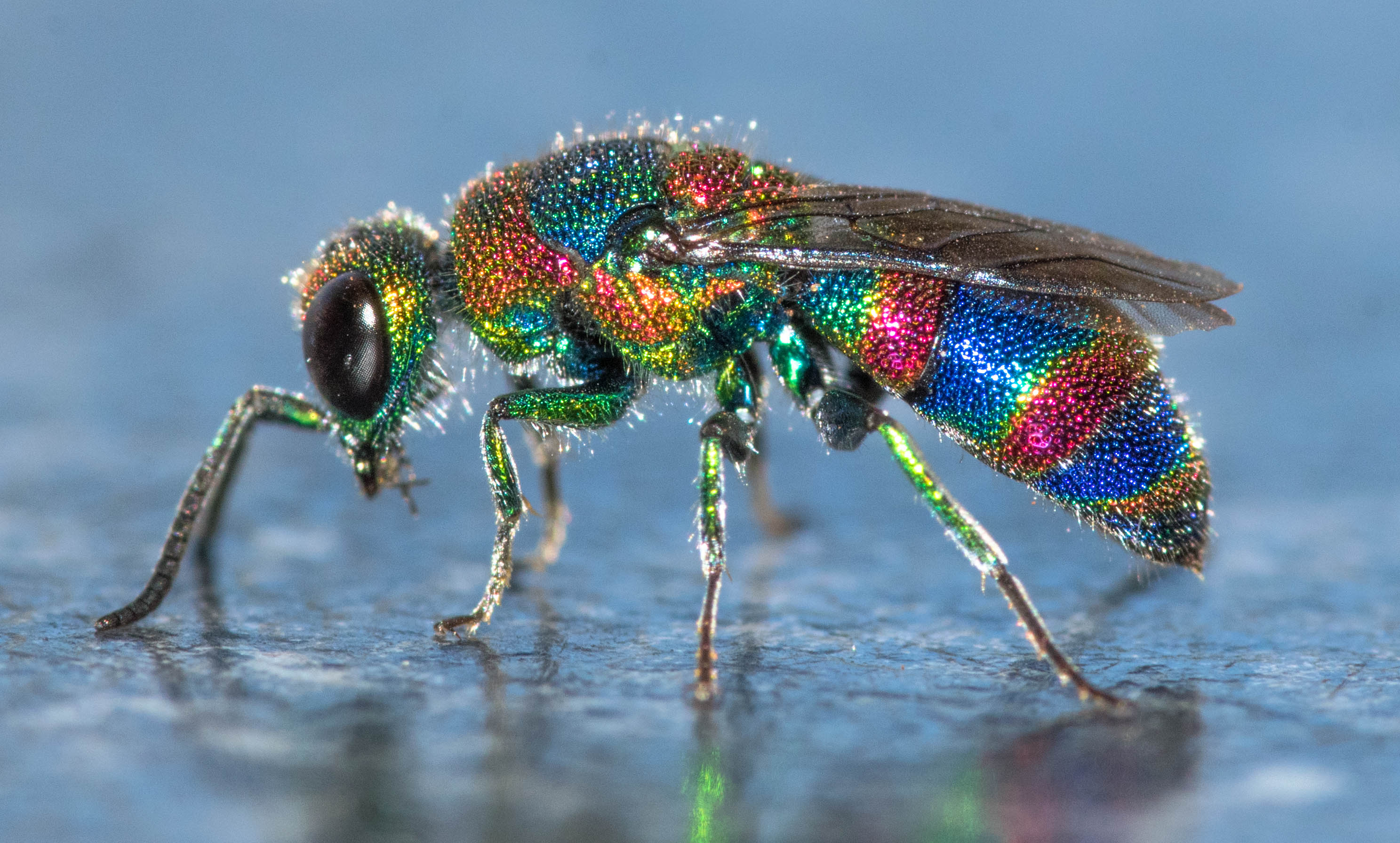
Scientific name: family Chrysididae
Cuckoo wasps are types of wasps under the family Chrysididae. There are over 3,000 species of Cuckoo wasps, and most of them live in Australia.
Cuckoo wasps are parasitic, and they often lay their eggs in the nests of other wasps or bees. This is like a cuckoo, which lay its eggs in the nests of other birds. This similar habit is why people call this wasp specie “cuckoo wasps”.
Other names for cuckoo wasps include “emerald wasp” and “Ruby-tailed wasp” because of their appearance. A cuckoo wasp’s body is a metallic color, usually green or blue. It is relatively small with an average body length of 0.5 inches.
Like some types of wasps, female cuckoo wasps have ovipositors instead of stingers. They pose little threat to humans.
European Hornet

Scientific name: Vespa crabro
Next on this list of types of wasps is the European hornet. It is the largest eusocial wasp species native to Central Europe and Asia. Eusocial wasps refer to wasps that can organize their colonies to a higher level of sociality than most types of wasps.
Today, the European hornet populates several areas in North America. This wasp species is mostly black, with a reddish-brown to yellow head. It also has yellow stripes on its back. On average, European hornet workers are around an inch long.
European hornets are pests to many because of their numbers. However, they are non-aggressive, and they won’t bother humans unless their nests are threatened.
Four-Toothed Mason Wasp

Scientific name: Monobia quadridens
One of the solitary types of wasps is the Four-toothed mason wasp. The Four-toothed mason wasp is a species from North America and Mexico. It also populates certain areas of New Mexico, Kansas, and Wisconsin.
The Four-toothed mason wasp is relatively small. They have an average body length of 0.43 to 0.57 inches for males and 0.55 to 0.71 inches for females. They have a black body, head, and wings, but a distinct ivory stripe runs across their back.
Four-toothed mason wasps have two generations in a year. This means one generation of wasps emerges in the summer, while the other overwinters and matures in the spring. During these seasons, many flowers bloom, and these wasps feed on pollen.
German Yellowjacket Wasp
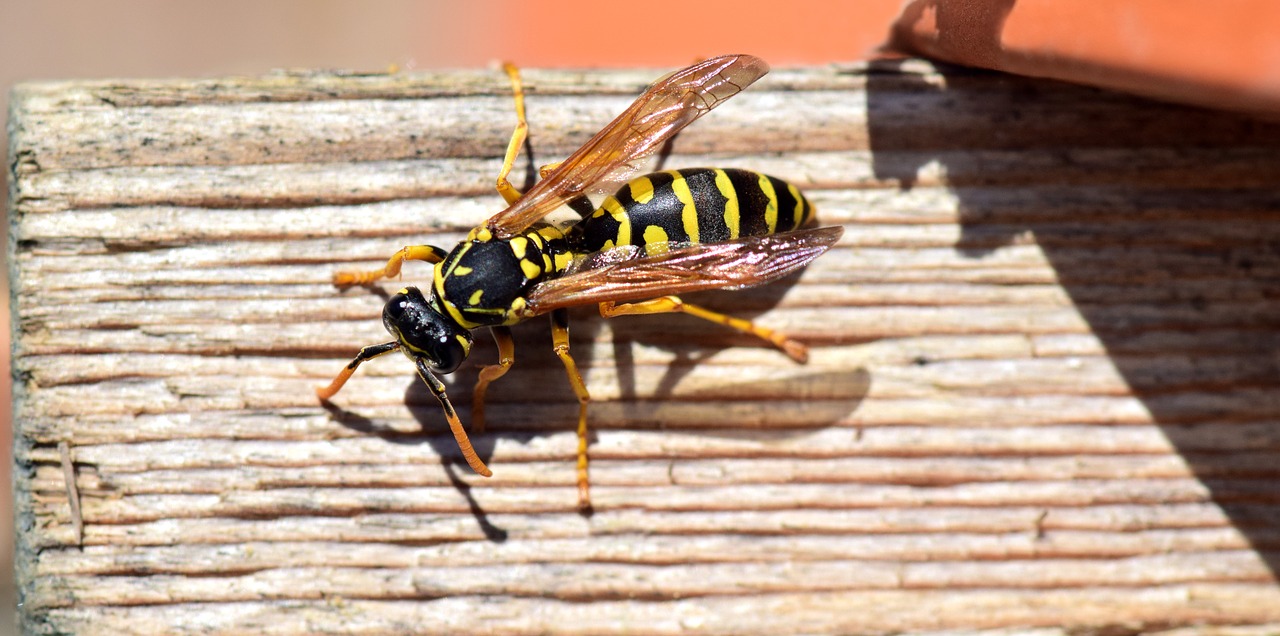
Scientific name: Vespula germanica
Native to Europe, Northern Africa, and Asia, the German yellowjacket wasp is now a wasp type that can be found in every content except Antarctica. It has a large population in North and South America, South Africa, New Zealand, and Australia.
The German yellowjacket wasp, or simply “German wasp”, is around 0.5 inches long. It has a black and yellow body. It looks like the common wasp, but it has three black dots on its face.
German wasps are opportunistic scavengers. They like to eat fruit, honeydew, human food, and garbage. Because they have more options for their diet, they don’t have to compete with other insects over food.
Like most types of wasps, German wasps are very defensive of their nest. They will repeatedly sting any threats to their nest.
Great Black Wasp
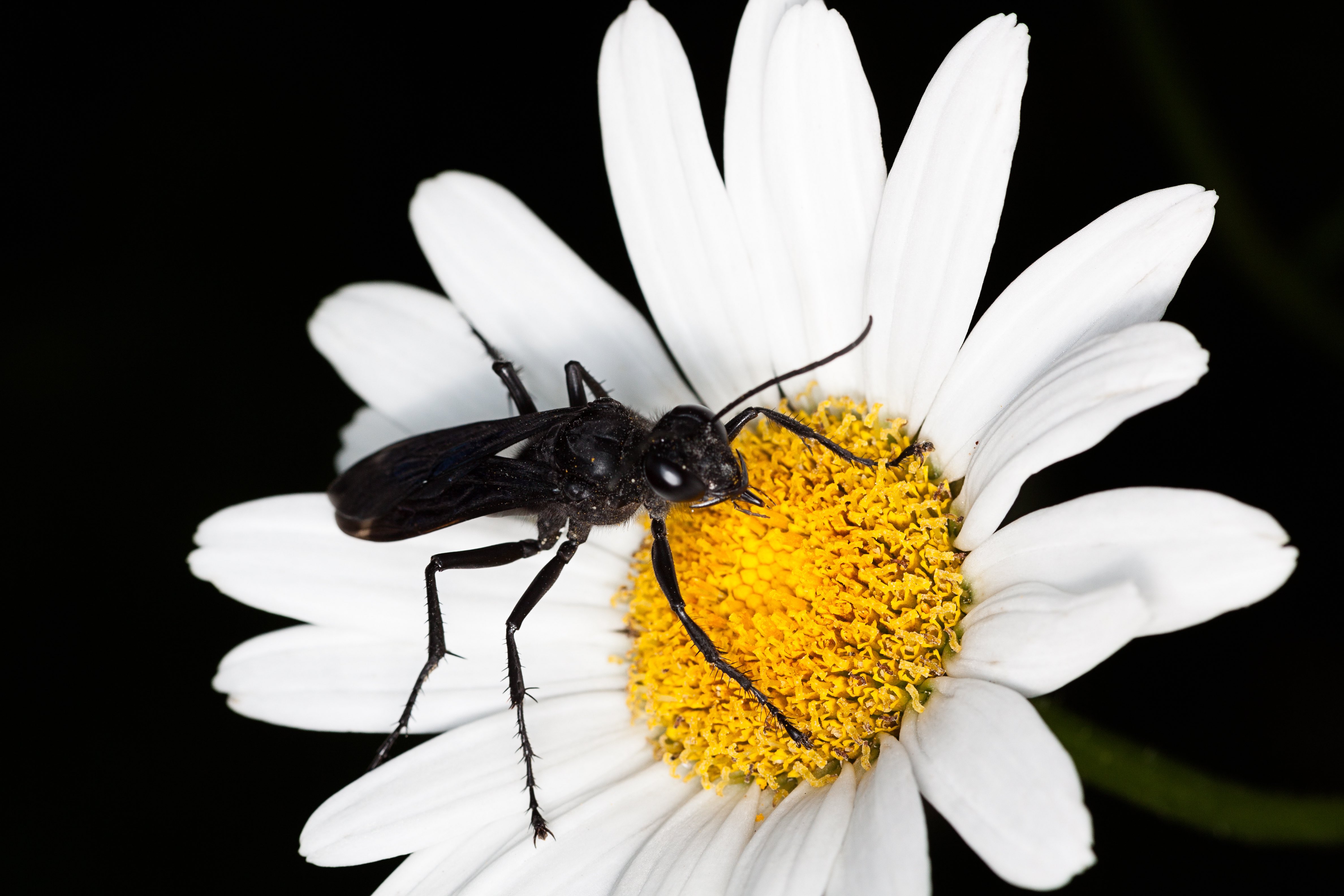
Scientific name: Sphex pensylvanicus
Different types of wasps populate North America, and yet another example is the Great Black Wasp. The Great Black Wasp was first distributed across the United States and Mexico until the late 20th century when its population reached New York and Canada.
As its name suggests, the Great Black Wasp is a large, black wasp. Most males are 0.7 to 1.1 inches long, while most females are 1.0 to 1.3 inches long.
Unlike most types of wasps, Great Black Wasps do not nest above ground. Instead, they dig their nests into the ground. These nests don’t contain large colonies since Great Black Wasps are solitary.
Female Great Black Wasps deliver painful stings, but their venom is not toxic. However, an allergic reaction can still occur for some, so it is best to avoid going near their nests.
Horntail Wasp
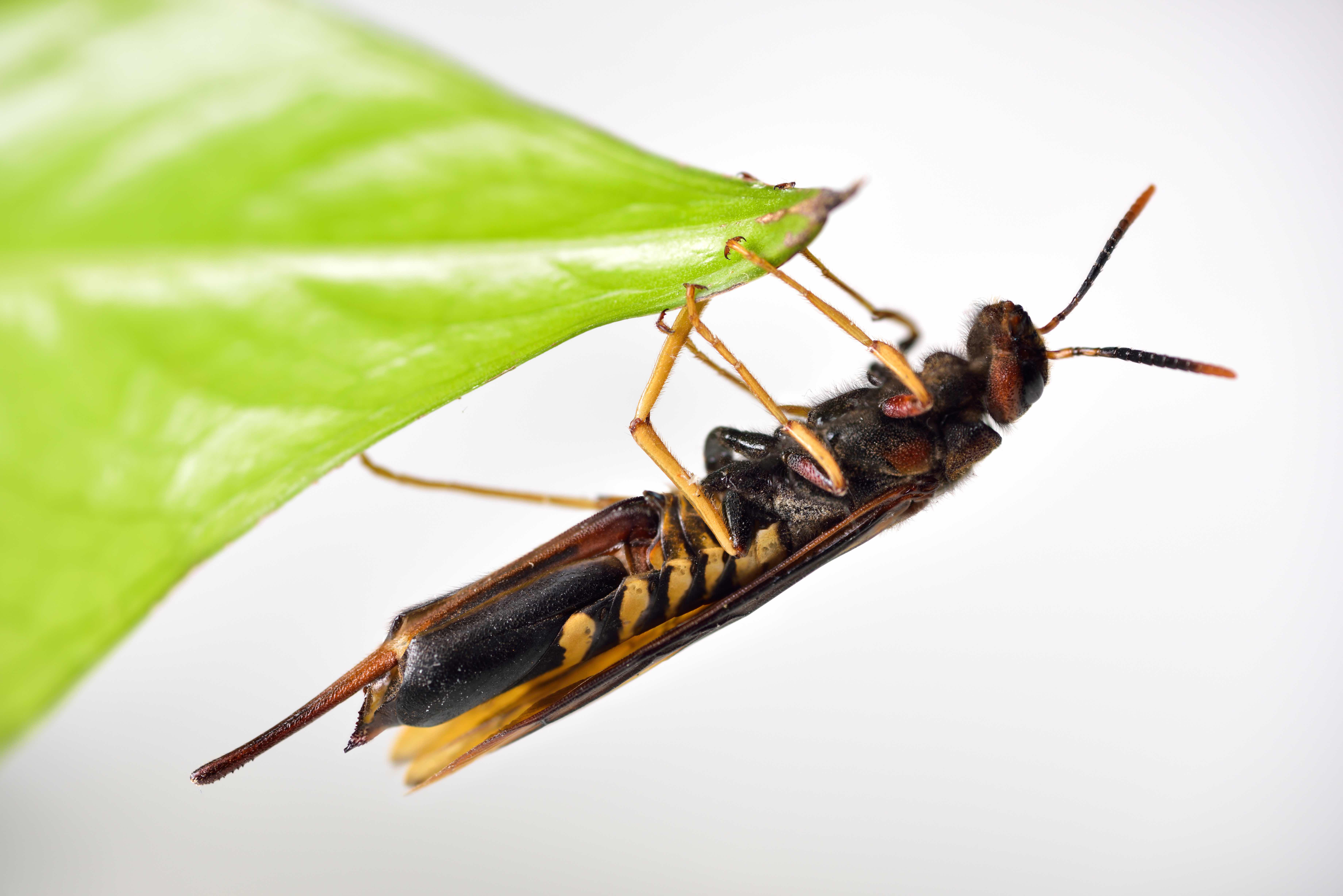
Scientific name: Urocerus spp.
The Horntail wasp is one of the types of wasps that populate several states in the United States. You can find Horntail wasps in Arizona, Iowa, New Jersey, and other states.
Its body is brown to black, and it has brown wings. The average Horntail wasp is around 0.70 to 1.57 inches long.
According to many, Horntail wasps are generally non-aggressive. However, many consider them to be pests since they often nest in tree trunks, where they lay eggs.
Horntail wasps have sturdy spines that help them split the wood and dig deeper to find a safe place to lay their eggs. Sometimes, however, other tree parasites still find and eat these eggs, so only a few survive.
Jewel Wasp
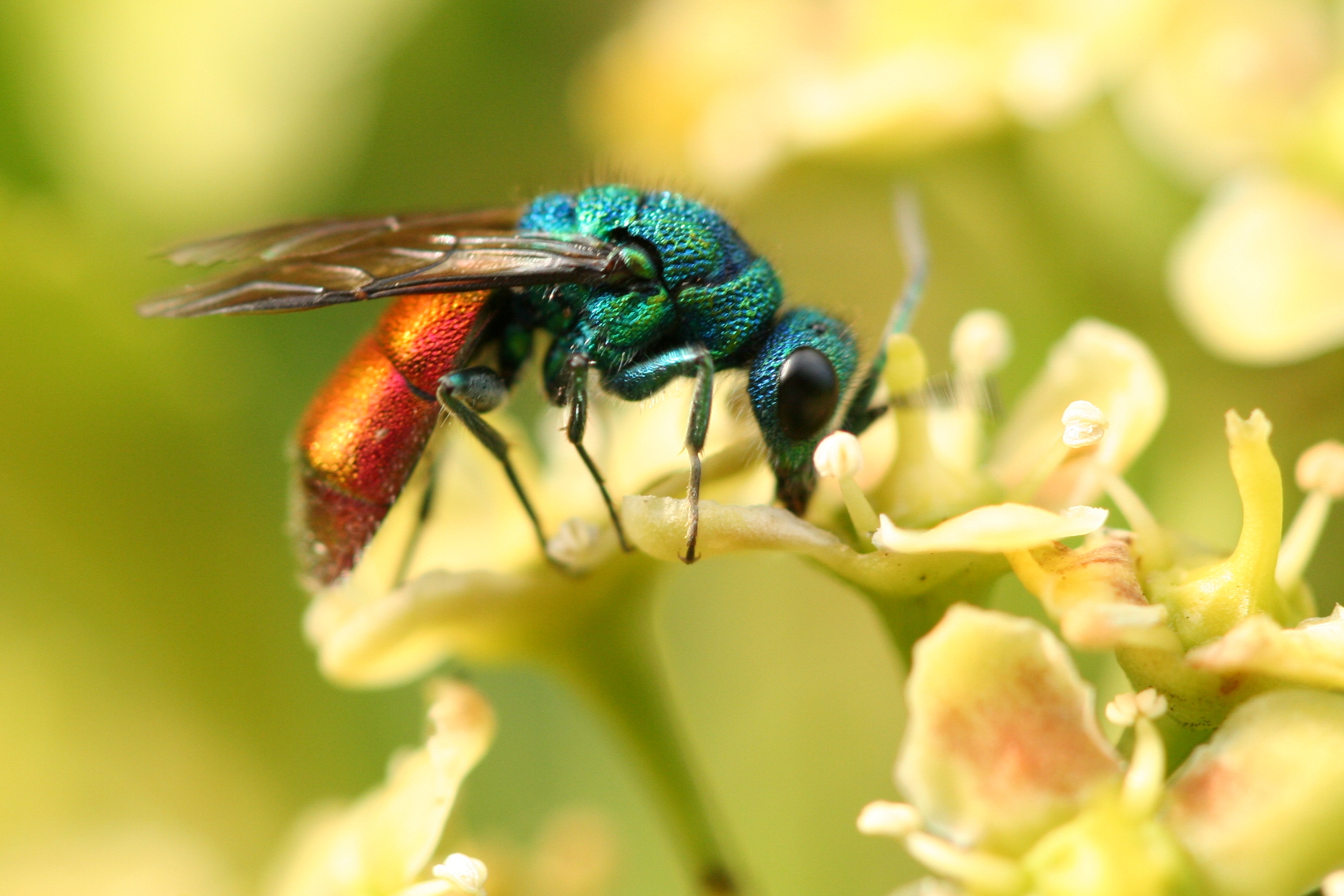
Scientific name: Ampulex compressa
One of the types of wasps you’ll find in the tropical regions of Africa, Southeast Asia, and the Pacific Islands is the Jewel Wasp. This wasp species favors warmer weather and is more common during the summer.
The Jewel Wasp has a metallic blue to green body. Like most types of wasps, the female Jewel Wasp is bigger, measuring around 0.86 inches long.
Most people call this wasp type the “Emerald Cockroach Wasp”. This name comes from its strange reproductive behavior. To lay its eggs, the Jewel Wasp stings and captures a cockroach. It uses its venom to paralyze the roach, and then traps it in a burrow.
There, the Jewel Wasp lays an egg between the roach’s legs. When the egg hatches, the larva eats the roach’s internal organs while living in its body. Others think of this process as the wasp “zombifying” the cockroach.
Mud Wasp
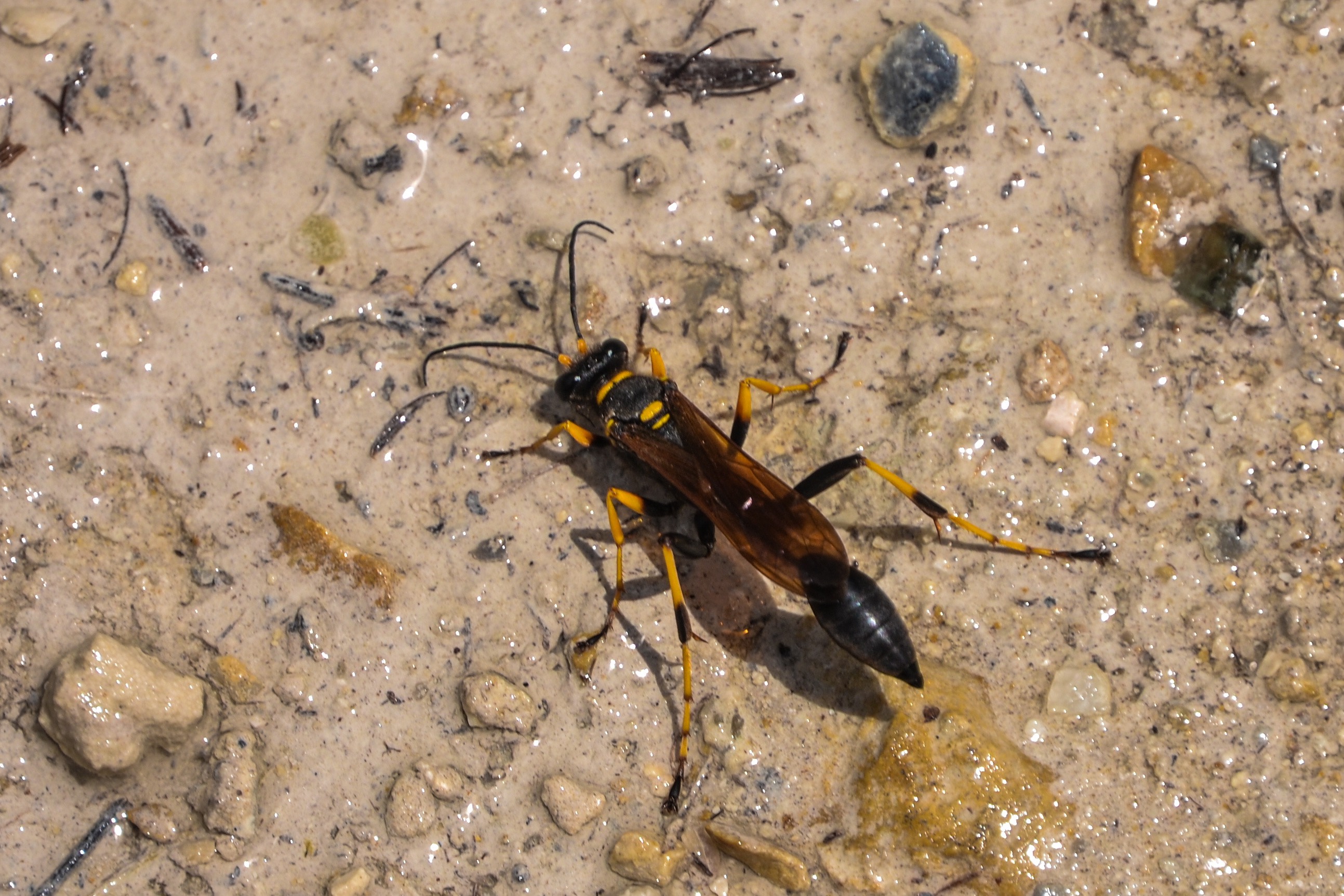
Scientific name: family Sphecidae or Crabronidae
Mud Wasps are wasps under the Sphecidae and Crabronidae families, except for the potter wasps. Several species of mud wasps are common throughout the United States.
Mud Wasps are mostly black, but some have pale markings on their bodies. Their wings are either clear or dark. Their average body length is 0.5 to 1 inch.
Unlike most types of wasps, Mud Wasps don’t build their nests with tree fiber. Mud Wasps build their nests using mud. Female Mud Wasps use the appendages near their mouths to mold mud into a nest.
Other names for the Mud Wasp include “Mud Dauber” and “Dirt Dauber”.
Orange Spider Wasp

Scientific name: Cryptocheilus bicolor
There are several types of spider wasps in Australia. The most common one is the Orange Spider Wasp.
The Orange Spider Wasp gets its name from its bright orange color. Orange Spider Wasps have orange-brown wings, and there are orange stripes on their body. They are relatively large wasps as females can measure up to 1.4 inches long.
As its name suggests, this wasp species feeds on spiders, such as the huntsman spiders and wolf spiders. The Orange Spider Wasp stings its prey with paralyzing venom. Then, it drags it into a burrow where it lays an egg on. When the egg hatches, it eats the prey and forms a cocoon in a corner of the burrow.
Potter Wasp
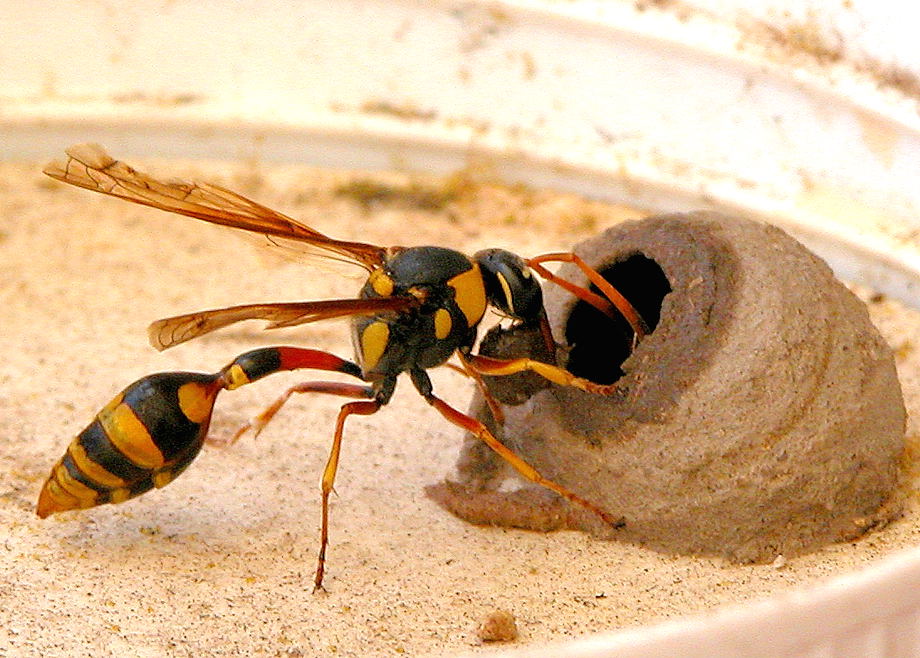
Scientific name: family Vespidae
The Potter Wasp, or “Mason Wasp”, is a wasp species found all over the world, such as in Australia and India. They are solitary wasps that favor woodlands and urban areas.
Potter Wasps have black bodies and heads. Some have yellow stripes around its body. Like many types of wasps, they have a slim “waist”.
People often mistake Potter Wasps for Mud Wasps because of their similar nests. Potter Wasps also use mud to build nests, like Mud Wasps. However, the nests of Potter Wasps look like vases or jugs. In fact, this distinct behavior is exactly why they have their name.
Tarantula Hawk
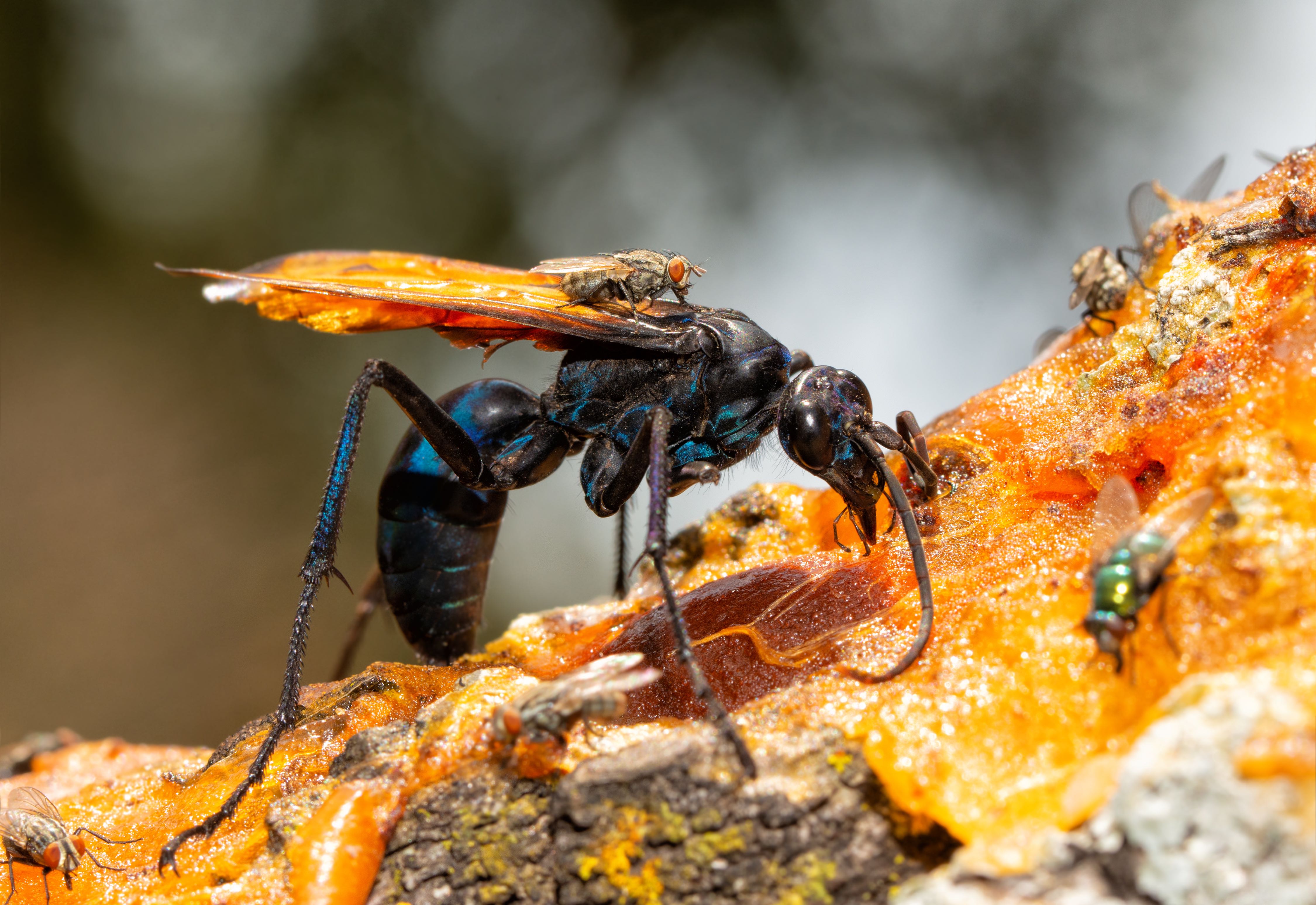
Scientific name: Pepsis spp., Hemipepsis spp.
Aside from Antarctica, you can find the Tarantula Hawk on all the continents of the world. At least 250 species populate regions of South America and Argentina.
Among the different types of wasps, the biggest one is the Tarantula Hawk. The Tarantula Hawk is around 2 inches long, and they have long legs and stingers too. In fact, a female Tarantula Hawk’s stinger can measure up to 0.27 inches long.
As its name suggests, the Tarantula Hawk feeds on tarantulas. The Tarantula Hawk is a parasitoid wasp. This means it captures a tarantula live, traps it in its nest, lays an egg on it, and leaves the tarantula to be eaten by the larva once the egg hatches.
Tree Wasp

Scientific name: Dolichovespula sylvestris
The Tree Wasp is a eusocial wasp species that can be found across Europe, Central Asia, and China. They populate both urban and rural areas.
Tree Wasps have an average body length of 0.43 to 0.59 inches. It looks similar to most types of wasps, with its black body and yellow markings. It has a small black dot at the center of its face, which can help people identify the species at a closer look.
Contrary to popular belief, Tree Wasps don’t just nest in trees. They also build aerial nests and underground nests. In nests, the queen of the Tree Wasps often enacts worker policing. Worker policing refers to destroying the eggs produced by workers.
Tropical Hover Wasp

Scientific name: Liostenogaster flavolineata
The Tropical Hover Wasp is a species that lives in the rainforests of South Asian countries, such as Malaysia.
Tropical Hover Wasps build their nests using mud. Usually, these nests are under rocks or bridges. It is unknown to scientists why, but Tropical Hover Wasps build much bigger nests than what their colony needs.
Since their nests are quite small, some workers fly to a nearby colony to help there instead. These wasps are called “floaters”.
Yellow Jacket Wasp
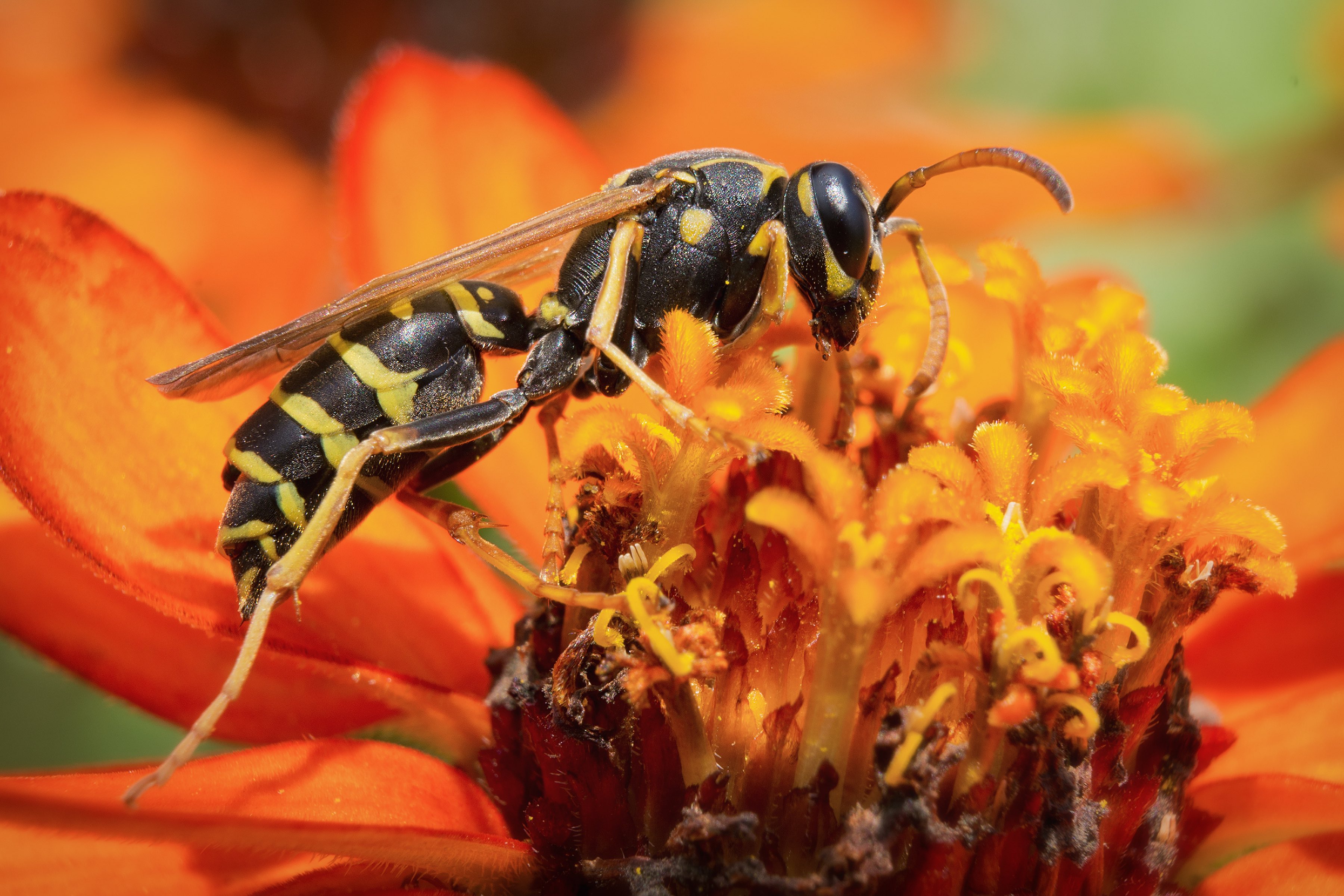
Scientific name: Dolichovespula maculata
One of the most common types of wasps is the Yellow Jacket Wasp. The Yellow Jacket Wasp, or “Yellowjacket”, is a social wasp that dominates Ohio and the other US states.
On average, the Yellow Jacket Wasp is around 0.47 inches long. It has a black body and yellow stripes on its abdomen. Because of its appearance, many confuse the Yellow Jacket Wasp for a bee. However, they do not have hair on their bodies like honey bees do.
The Yellow Jacket Wasp can be aggressive. When it stings an intruder, it will mark them with its venom and pursue them until the threat is eliminated.
Several universities in the United States use the Yellow Jacket Wasp as their sports team’s mascot, such as the Georgia Tech Yellow Jackets, Howard Payne University, and the University of Rochester.
Was this page helpful?
Our commitment to delivering trustworthy and engaging content is at the heart of what we do. Each fact on our site is contributed by real users like you, bringing a wealth of diverse insights and information. To ensure the highest standards of accuracy and reliability, our dedicated editors meticulously review each submission. This process guarantees that the facts we share are not only fascinating but also credible. Trust in our commitment to quality and authenticity as you explore and learn with us.


